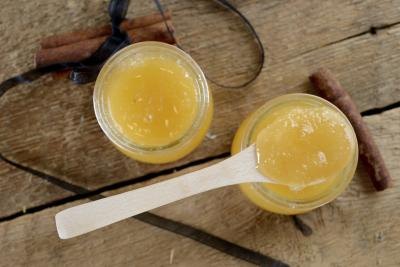Honey and cinnamon have been used as food flavorings and for medicinal purposes for centuries and both are believed to be safe, although some positive and negative side effects may be possible. Honey and cinnamon contain antioxidant components which may have a beneficial effect and both also may help lower blood sugar levels. However, additional research is needed. Consult with your physician before you begin using any home remedy.

Positives with Cinnamon
Initial studies suggest that cinnamon may mimic insulin and lower blood glucose levels, but more research is needed to be certain, according to the National Center for Biotechnology Information. Laboratory and animal studies suggest that concentrated cinnamon extract may have antifungal, antibacterial and antiparasitic properties, and subsequently have a beneficial effect on vaginal and oral yeast infections and thrush, stomach ulcers and even head lice. There is no conclusive scientific evidence for these benefits, however.
Positives with Honey
The high sugar concentration in honey kills microorganisms, making its use as a topical treatment for wounds the primary and most studied medicinal benefit, according to the University of Pittsburgh Medical Center. Two small studies suggest that honey used as a topical treatment may help prevent gingivitis in some people and oral mucositis, or inflammation of the mouth’s mucus membranes, in some patients undergoing radio-chemotherapy for head and neck cancers. Ingested, honey may have a small laxative effect, help metabolize alcohol, and help lower cholesterol and blood glucose levels. These uses have not been proven, however.
Antioxidants
Harmful free radical cells may cause aging and lead to a variety of degenerative conditions such as cancer, heart disease, Alzheimer’s and Parkinson’s disease. Antioxidants, a component of certain foods, may work to decrease the adverse effects of free radicals. Measured in micromoles of Trolox Equivalents (μmol TE) per serving, the amount of antioxidants found in the same type of food will vary according to growing and production variants. Ground cinnamon contains 131,420 μmol TE per serving and honey 270. Comparatively, raw broccoli, naval oranges and brewed green tea have 1,510, 1,819 and 1,253 μmol TE per serving, respectively.
Negatives with Cinnamon
Ground cinnamon is widely used as a spice and is believed to be safe. Concentrated cinnamon extract may work as a depressant, however. Pregnant and nursing women, and people with severe kidney or liver disease should be cautious taking cinnamon oil as maximum dose information has not been set. Cinnamon may contain coumarin, which can cause damage to your liver. Use cinnamon with caution if you take blood-thinning medications, such as aspirin, or blood glucose-lowering medication.
Negatives with Honey
Honey is believed to be safe when ingested and used as a topical treatment under proper medical care. Honey may contain slight amounts of pollen but you aren’t likely to have an allergic reaction to it, even if you’re normally allergic to other types of pollens. Children under 1 year of age should not eat honey due to a risk of infant botulism.
www.livestrong.com





No comments:
Post a Comment